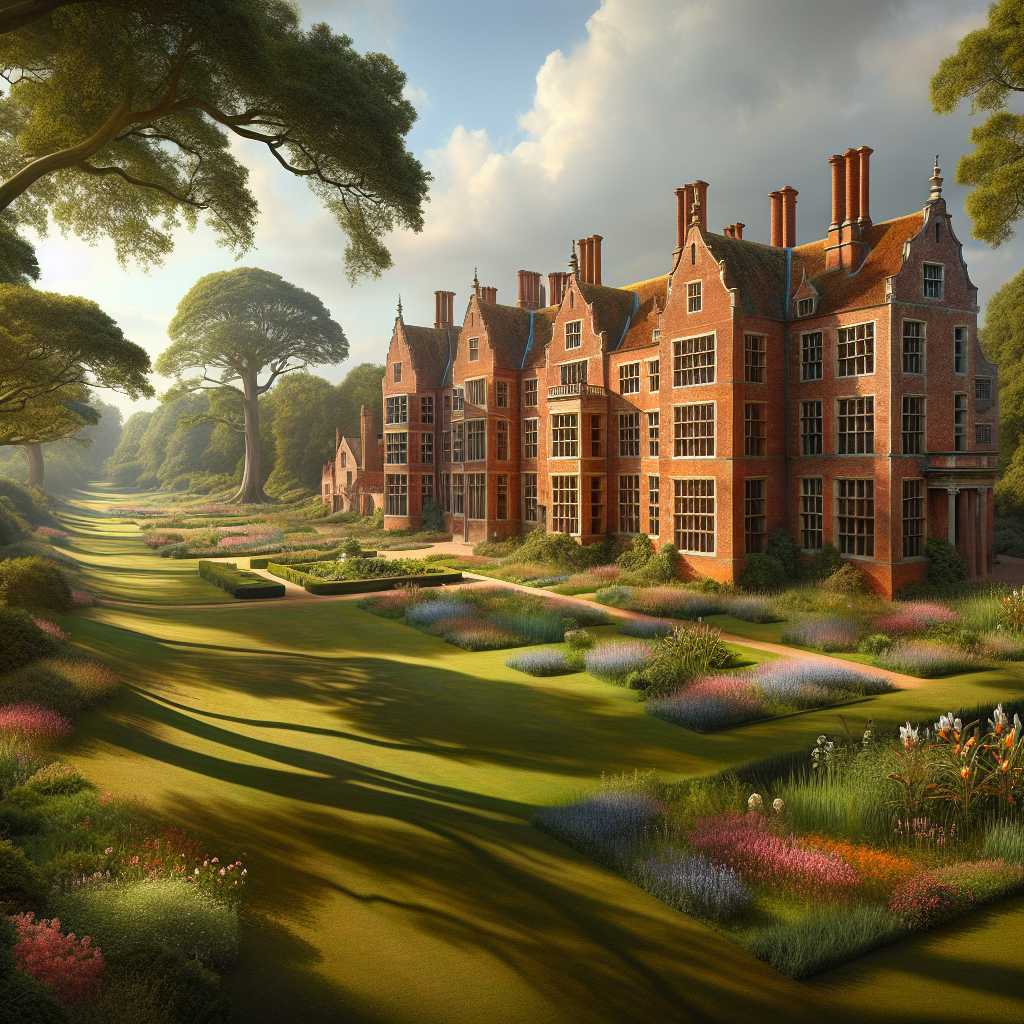### The Royal Retreat: Exploring Sandringham Estate and its Historical Significance
Sandringham Estate serves as a private residence of the British royal family and has done so since the reign of Queen Victoria. Nestled in the Norfolk countryside of England, the sprawling estate has been the backdrop of numerous royal occasions, retreats, and holiday celebrations. It intertwines rich history and tradition within its scenic landscapes and has opened portions of its vast area to the public, making it not only a sanctuary for royalty but also a site of national cultural heritage.
History of Sandringham Estate
The origins of Sandringham Estate date back to the mid-19th century. Prince Albert, the husband of Queen Victoria, purchased the property in 1862. The estate included a stately mansion which was deemed unsuitable for the royal family’s needs; thus, a new house was built, replacing the old in 1870. It was designed in the style of Jacobethan architecture showcasing traditional forms mingling with elements of Renaissance design.
Sandringham has since served as the site for numerous historic events within the British royal family. It has regularly provided a winter retreat for the monarch, especially favored for its seclusion and respite from London life. Notably, it was beloved by King George V and Queen Mary, who were frequent residents, and King George VI died there in 1952. Queen Elizabeth II has continued to strengthen the estate’s role as a cherished family home during winter holidays.
The Estate an Open Door to Public Spaces
Despite being a private royal residence reserved for regal affairs and personal retreats, Sandringham doesn’t shy away from public discovery. The estate features extensive gardens that have been generously added to by each monarch according to their horticultural leanings. The result is an eclectic blend of styles showcasing a variety of plants. Today, these gardens, along with other parts of the estate, such as the museum and church, are accessible to tourists.
Prince Charles’ sustainable farming practice on the estate ground received accolades worldwide pushing forward Sandringham’s name beyond being associated with royalty alone. The organic approach to farming on the Sandringham Farms emphasizes ecological stability and acts as harmony between agricultural progression and environmental preservation.
Architectural Splendor Surrounding Sandringham House
Sandringham House stands out not only because it is a residence of royalty; its architectural grandeur establishes it as a historical edifice in its own right. Alterations have occurred regularly during its royal occupation, each tastefully adding amenities while preserving historical integrity. The Sandringham Church boasts magnificent embellishments, it enchants with its stained-glass windows crafted by Charles Eamer Kempe—a renowned Victorian designer producing works during what is heralded as the golden age of stained glass.
Lifestyle at Sandringham: From Past to Present
Life at Sandringham revolves around seasonal traditions rooted in royal history, many reflecting those that reigned during Queen Victoria’s time and having evolved into customs observed by following monarchs. These include Christmas gatherings where generations of the royal family congregate for festive activities. Royal hunting parties are another established part of Sandringham’s chronology reflecting sportsmanship traditions running back centuries within British gentry class circles.
Within modernity’s lens, changes have infused new vigors into these long-standing practices signifying adaptability amidst continuity resonant with contemporary understanding shared governance.
Notes
- Prince Albert purchased the original Sandringham Hall and the surrounding parkland in 1862 for £220,000.
- Construction of the current Sandringham House was completed in 1870 under the direction of architect A.J. Humbert.
- The total area of Sandringham Estate is approximately 20,000 acres including gardens, woodland and several farms.
- Sandringham floor space sprawls at around 25 hectares with nearly 200 rooms.
- The estate remains one of only two private residences owned by The Royal Family that is not held by The Crown Estate; Balmoral being the second one.Atop maintaining engagement endeavors with heritage protegees national loggerheads conceptualizations restraint political ideologies prevails therein availing umpire-standard neutral recounting.
Image description: A broad daylight view of Sandringham House amidst rolling green lawns with patches of colorful flower gardens; towering trees wrap around one side casting shadow onto this regal Jacobethan mansion’s brick red façade hinting its grand historical legacy interlaced with utilitarian undertones upon Norfolk’s countryside terrains intricate oscillations festoonery augment emboldens traditional aristocratic English decor—symbolizing an abode for tranquil royalty retreats nestled within resonance timeworn edifices poised distilling continuum paragonism steward hindsight frontiers epochal duality past present intersectionality surmised through interpretational adjacency abode pastoral denouements amidst rustic recollections standings state steward heritage vision prisms.
